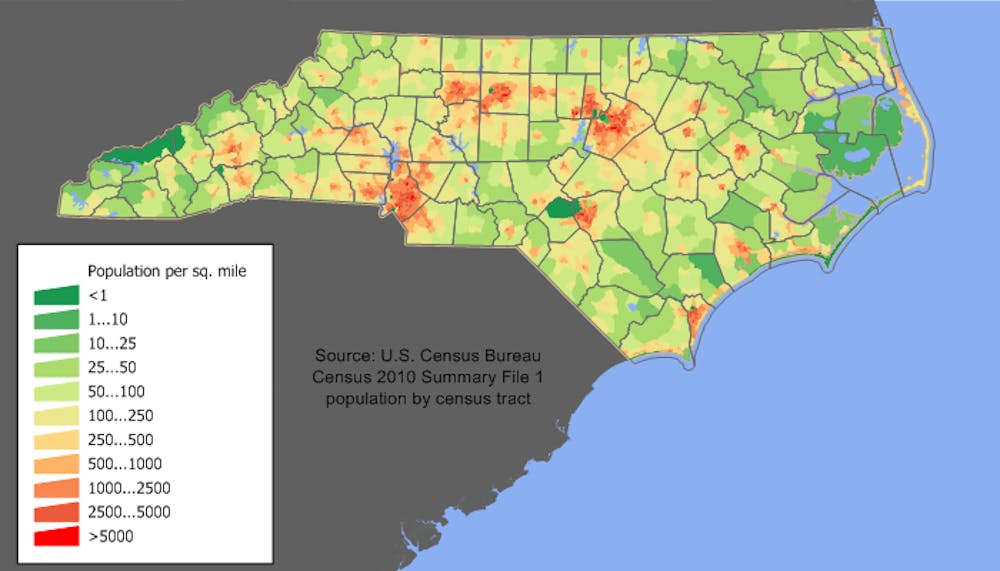The demise of “Small Town USA” may be imminent, suggests a recent North Carolina demographics survey.
According to data from the University of North Carolina at Chapel Hill Carolina Population Center, North Carolina's total population increased by 611,000 from 2010 to 2016—with over 70 percent of that increase centered in the two largest urban areas, the Triangle and Charlotte. In contrast to this sharp population increase in urban areas, most of the state's small towns are facing population stagnation or decline.
“We’re seeing concentration around the urban cores, and so nearly all the municipalities that are in decline tend to be in more rural areas that are not located very closely to any major metro area," said Jessica Stanford, a demographic analyst at the Carolina Population Center.
Of North Carolina's 553 municipalities, 225 of them—which account for approximately 41 percent of its towns—showed a decline in population over the five-year span, according to recent census data. Another 192 municipalities displayed stagnant growth, meaning that they grew at a rate slower than the state's average of 6.4 percent.
“That brings the total to three of every four municipalities [having] declined or stagnant growth since 2010,” Stanford said.
The Carolina Population Center's data also showed that the northeast corner of the state has been hit the hardest by slow growth. The top ten municipalities with the highest rates of population decline are all from three counties—Northampton, Bertie and Washington.
Stanford noted that the population trends often reflect shifts in the economy.
As agriculture in rural areas becomes a less prominent career path, job growth is concentrating in higher-skilled positions in metropolitan areas such as the Triangle, she explained. This could help explain the rapid growth she and her team observed in cities like Durham and Raleigh.
“A lot of farms are consolidating because that is the economically viable thing to do,” Stanford said. “Crops like tobacco have definitely declined in importance, and that was at one time a major cash crop here in North Carolina.”
She added that some smaller municipalities are seeing population declines due to domestic migration. In these scenarios, younger workers move out of the more rural areas of the state and leave behind an elderly population, artificially elevating their death rates over their birth rates.
This will be particularly relevant for the counties of Bertie, Northampton and Washington—the seats of the top ten towns for population decline—in the future, as each of them has a higher population of individuals above the age of 65 than is average for North Carolina.
“The pattern of decline just gets even more entrenched as you have a largely middle-aged and retirement-aged group of people left behind in these rural areas,” Stanford said. “As death comes upon, then you have even more decline.”
She noted that the population decline for small towns is not limited to North Carolina and instead reflects a national trend. Based on the data she and her team collected for the past six years, Stanford said she expects this progression toward urbanism to continue in the future.
“The image of ‘Small Town USA’ is something that we all enjoy and that’s something that should be preserved," she said. "But unfortunately, we’re going to see these small towns more as satellite towns.”
Get The Chronicle straight to your inbox
Sign up for our weekly newsletter. Cancel at any time.

